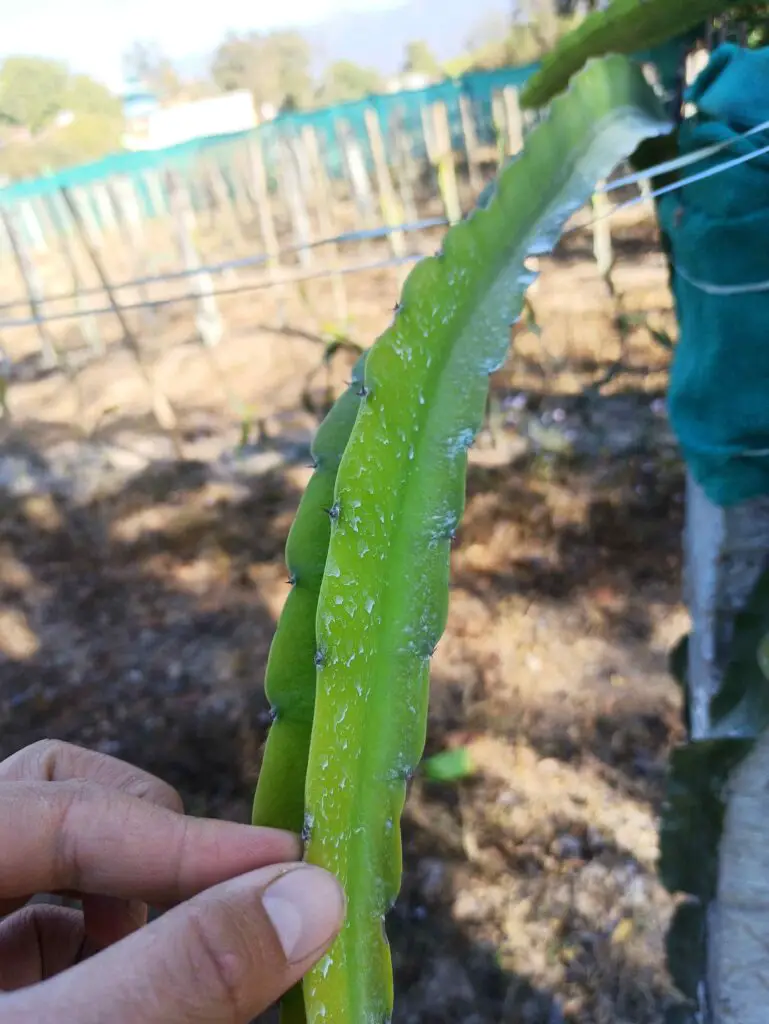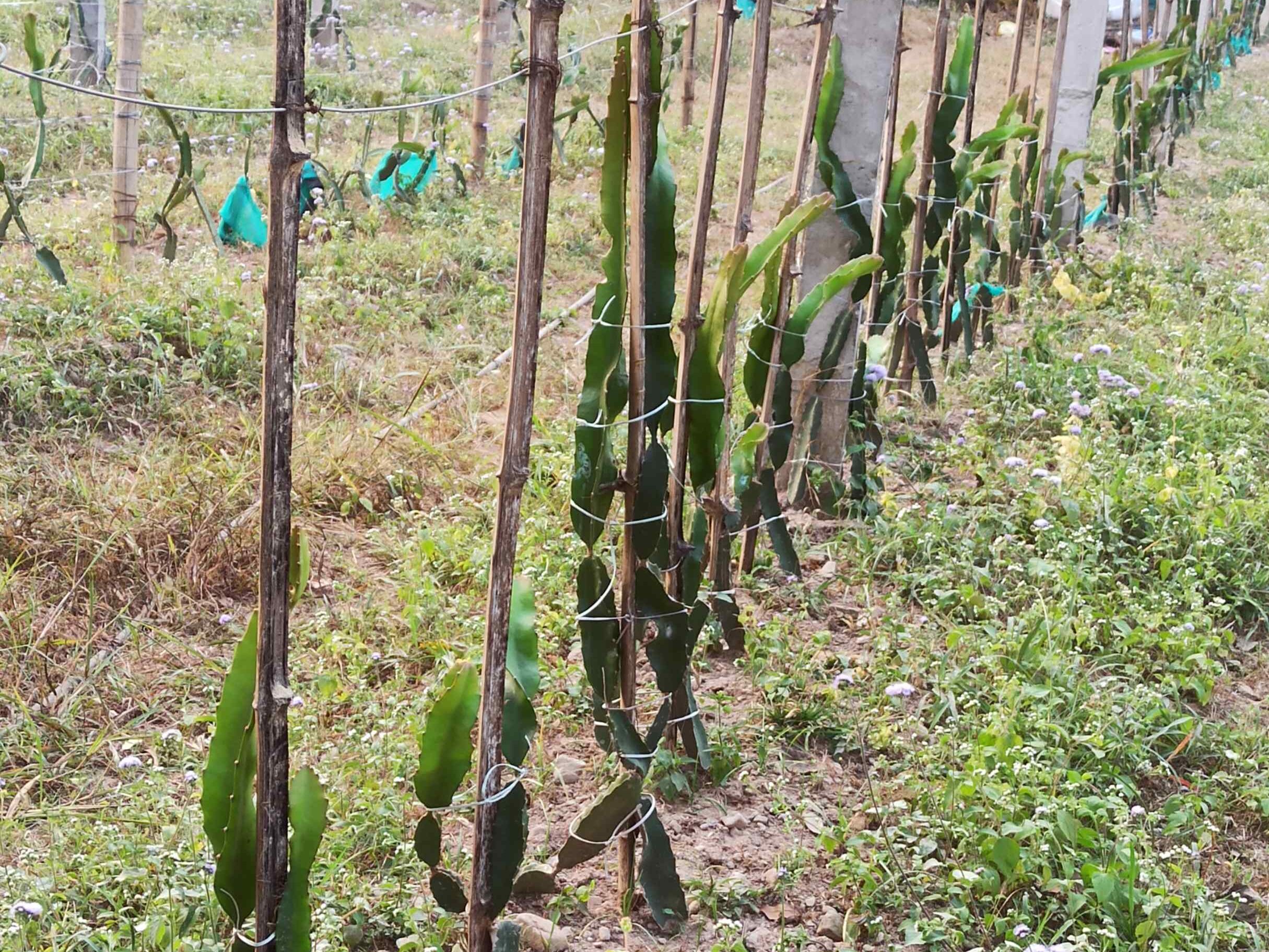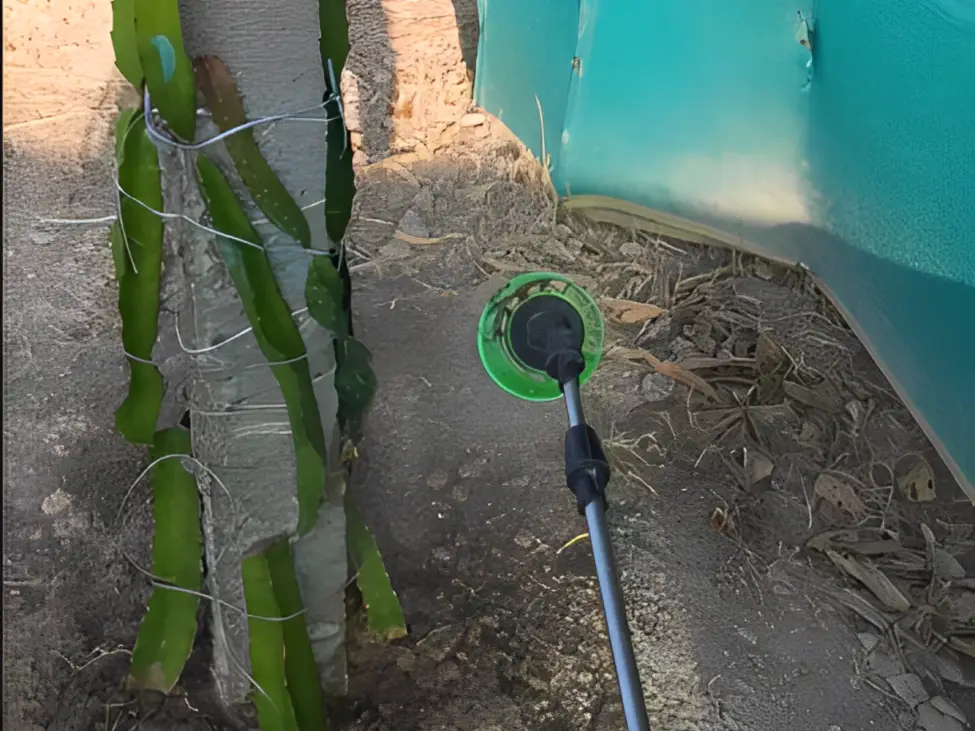Let me take you back a few years.
I was just like many of you — excited, full of hope, and ready to dive headfirst into dragon fruit farming. The vibrant pink fruit with its unique taste and rising market demand had caught my attention. Everyone was talking about the baby dragon fruit plant. I thought, “Why not give it a shot?”
But here’s the truth that many won’t tell you: growing a dragon fruit plant isn’t just about planting it and watching it grow. It’s a learning curve. Especially here in India, where dragon fruit farming is still relatively new, and real-world knowledge is often hard to come by.
So, after years of hands-on experience, trial and error, and dozens of conversations with fellow farmers, I’ve put together this guide for you.
Let’s talk about the five biggest mistakes new farmers make with baby dragon fruit plants — and how you can avoid them to grow a healthy, profitable farm.
Mistake #1: Poor Bed Size & Structure Planning

Most new farmers underestimate the importance of bed size when planting a baby dragon fruit plant. You have to understand that this plant grows like a vine — it climbs, it spreads, and it needs strong support.
There are mainly two structures that I’ve used and seen success with:
- Traditional Ring and Pole
- Trellis System
Whichever structure you choose, make sure it is at least one foot above ground level. This helps prevent root rot and water logging, especially during heavy rains. One thing I always say — your structure is not just for a season, it should support your dragon fruit plant for the next 20–25 years. Yes, that’s how long a single plant can produce fruit if cared for properly!
Also, think ahead: each pole will eventually need around 30 kg of compost or fertilizer annually. So your bed must be wide enough to allow that space.
Pro tip: Use a mixture of sandy soil or fine gravel in your bed to ensure drainage. Once the plant settles, it’s very hard to rebuild the base without disturbing its roots. Do it right the first time.
Mistake #2: Overwatering the Baby Dragon Fruit Plant

This is probably the most common mistake — and the most dangerous. Unlike traditional fruit crops, a baby dragon fruit plant is a tropical cactus. That means it doesn’t need as much water as you might think.
I’ve seen many new farmers water their fields like they would mango or banana trees. But let me tell you — too much dragon fruit water can literally kill your plants.
Here’s how I manage watering:
- Summer Months: Water once every 6 to 7 days, around 1 liter per plant. Too much water during summer invites fungus and root disease. Start with a bit more, then reduce slowly.
- Winter Months: Interestingly, dragon fruit plants actually need a bit more water in colder months. I give them 2–3 liters every 6 days, and if I’ve done mulching, sometimes I stretch to 8 days.
Never water blindly. Always check the soil moisture before adding more. Your soil might be holding water longer than you think. Farming isn’t just copying someone else’s technique — understand your local conditions.
Mistake #3: Not Pruning on Time

Let me tell you something important — pruning is not optional. A baby dragon fruit plant sends out multiple shoots from every node, but you only need one healthy main shoot climbing upwards.
If you skip pruning:
- Your plant wastes energy on growing useless shoots.
- Growth slows down.
- The plant becomes bushy and weak.
Cut off any round-tipped shoots and keep only the sharp-pointed ones — these are the ones that grow strong and fruit-bearing branches. Also, remove any damaged or pest-affected shoots.
Start pruning from the beginning. It might seem small, but it shapes the entire future of your dragon fruit plant.
Mistake #4: Ignoring Tip Cutting at Fruiting Time

Most new farmers wait and watch during the fruiting season, hoping for flowers and fruits to appear magically. But let me share a trick that works wonders — tip cutting during early fruiting season.
In North India, the flowering season usually starts around June or July. If your baby dragon fruit plant has a full canopy but is not flowering, do this: cut 2–3 inches off the tips of each branch.
Why?
Because cutting the tip redirects the plant’s energy to producing buds and flowers instead of just growing longer. Pair this with a high phosphorus and potassium dose, and the results will amaze you.
Also, avoid using too much nitrogen during monsoon — the soil already has it naturally. To balance nutrition, I recommend NPK consortia that release nutrients gradually.
Mistake #5: Incorrect Plant-to-Plant Distance

I get asked this all the time: “How much space should I leave between each baby dragon fruit plant?”
Let’s break it down:
- If you’re using poles, place 4 plants around each pole.
- In the trellis method, maintain 1.5 to 2 feet distance between each plant.
Don’t plant too closely. If roots overlap, they will compete for nutrients, and growth will suffer. Each dragon fruit plant needs its own room to grow.
Still unsure? Do a simple test. Plant rows with 1 ft, 1.5 ft, and 2 ft spacing and observe them for 3 months. You’ll see the difference in growth, watering efficiency, and fruit size.
Bonus Tips from My Farm to Yours

Here are a few extra tips I’ve picked up over the years. These can dramatically improve your yield:
- Gibberellic Acid: Helps in fast vegetative growth and boosts flowering.
- Multi-nutrition liquid sprays: Don’t rely only on soil. Use foliar sprays for micronutrients.
- Growth Promoters: They help restart slow-growing plants and improve branching.
- Humic Acid: Great for root health. I apply it monthly in root zones, especially for young baby dragon fruit plants.
Always test any spray or tonic on a small section of your farm before applying it widely. What works for one farm may not suit another.
FAQs
Q1. What happens if I give too much water to a baby dragon fruit plant?
A1. Overwatering causes root rot, fungus, and even plant death. Remember, it’s a cactus — go light on the dragon fruit water.
Q2. What fertilizers can I spray for better growth?
A2. A balanced NPK 19:19:19 water-soluble fertilizer, along with micronutrients and multi-nutrient tonics, gives great results.
Q3. Is dragon fruit farming easy?
A3. Not easy — but definitely rewarding. With patience, care, and the right approach, your baby dragon fruit plant can give excellent profits.
Q4. What does the dragon fruit taste like?
A4. It’s mildly sweet with a neutral taste. New shoots are edible too, but they’re often attacked by pests, so protect them well.
Q5. Can I grow dragon fruit on bamboo sticks?
A5. Bamboo won’t last more than 2–3 years. Since your dragon fruit plant will bear fruit for over 20 years, build a strong structure from the beginning.
Final Words
If you’re just starting out, remember this: don’t rush.
Take your time to observe your baby dragon fruit plant. Learn how it reacts to your soil, water, and climate. Farming is not just a job — it’s a relationship with nature. And the more you understand your plants, the better they reward you.
I’ve made these mistakes so that you don’t have to. Now it’s your turn to build a farm that thrives, not just survives.
Happy farming!
If you have any queries do let me know in the comment sections or just mail me.


10 thoughts on “5 Mistakes New Farmers Make While Growing Baby Dragon Fruit Plants (And How to Avoid Them)”